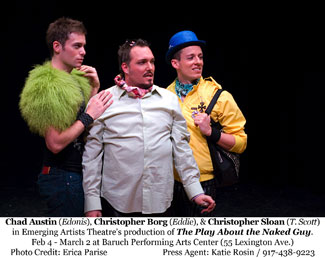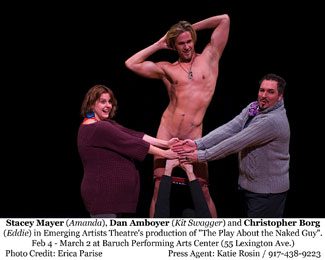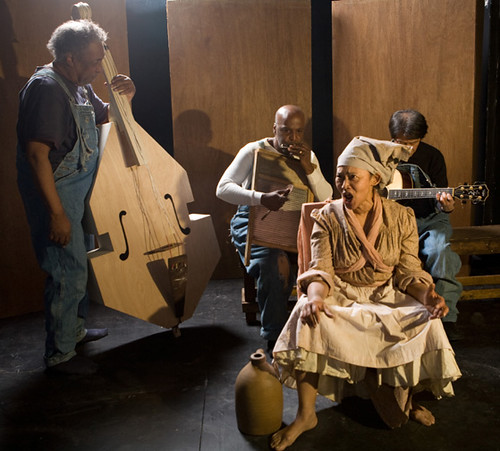Alex Nackman, Still Life Moves
It took me a while, but I finally thought of who Alex Nackman reminds me of: Peter Frampton. That dates me, of course, as does the fact that Don Henley's solo albums from the 80s came to mind when I listen to Nackman's more keyboard-dominated songs. But on a fundamental level, nothing much really changes in pop music – it's always about writing good songs and putting them across effectively, and Nackman does both, with slightly hoarse yet airy, friendly tones. Though his pop is shiny, there's a rootsy element to songs like "Banking on November," coming mostly from his lead guitar lines. But the dominant feel is shimmery, ideal for his hooky and well-crafted songs. The best of them are in the first half of the CD. "Wait For Me," "A Letter," and "Memento" are all superior, with the last resting on a modern thumping beat; "Banking On November" is a solid if obvious piano ballad, and more good ballads follow. The disc's later songs are less special, but taken as a whole there's a lot of really good work here – definitely worth checking out.
Aaron English, The Marriage of the Sun and the Moon
A rootsy thrum and psychedelic overtones animate Aaron English's progressive pop. There's a noticeable influence of classic big-thinking artists like the Police (and solo-artist Sting), Peter Gabriel, Crowded House, Led Zeppelin, and even (if you get right back to it) the Beatles, with a lot of "world beat" mixed in. As in all good pop, the best of these songs are full of hooks – some of them quite unusual, like the monotonous, growled chorus in "Like Smoke" and the multi-voiced bridge of "Anywhere-End-Up Street."
"Thin Ice," "Crossing the Desert, Crossing the Sea," and the title track are good examples of English's ability to construct ear-catching music and deliver it with feeling and style. His more contemplative songs, while less obviously memorable, create intriguing atmospheres. And he relieves the overall seriousness with a lighter touch just often enough, as in the sad-but-bubbly "God Bless You and Your Man." As a singer, English is not stupendous, but he's good enough, and the music on this disc is consistently fine. Listen at the website.
Steve Means, Rescue Me
Refreshing funk and soul grooves animate Steve Means's debut 7-song disc. His vocals have an unthreatening mildness, and yes, that's a nice way of saying they're on the weak side, but small, drippy vocals don't stop the plethora of limp-voiced African-American male singers in the R&B world, so why should we penalize a white singer for not being a belter? Means's voice is pleasing enough, and the chunky grooves and earthy, organ-fueled arrangements are the big attraction here anyway. He departs from the formula a little bit with the smooth pop of "Calm Down," though Benjamin Blake's solid bass still lays down the funk. "Woman Without a Name" is a dramatic and sweet jazz-waltz number that builds to a dense climax. Fans of John Mayer and Marc Broussard will probably dig this CD, as will Dave Matthews partisans and anyone to whom the term "soul-brewed pop," which Means uses for his music, strikes a chord.
The Handcuffs, Model for a Revolution
Here is some superfun new-new-wave girl-fronted rock from a Chicago duo that's gotten a heap of TV placements for its music and it's obvious why – they've got great songs that sound so, so hip despite dipping into the past. 70's hard-rock guitar, 80's new wave machine language, 90's dance-rock (think Elastica), and 00's pop crunch combine into a sound that's appealing and familiar but distinct and very, very catchy. I especially like The Handcuffs' more unexpected moments, like the melodic blast in the chorus of "All Shine On"; the mixture of guitar riffage and edgy girl-group style anthemizing on "Mickey 66"; and the super-simple form of "Sex and Violins." Even the less remarkable songs like "Peggy Moffitt" and "Don't Be Afraid" are glossy and fun. A few formulaic filler songs towards the end won't get in the way of one's overall enjoyment of this twelve-song CD. Highly recommended.
Various Artists, Soul Summit
Keyboardist Jason Miles got together a group of top musicians and singers to record this live session of great old soul tunes with full-on brassed-up arrangements. Steve Ferrone on drums and the Funk Brothers' Bob Babbitt on bass are just the foundation of the band's funky sounds. Jazz singer Maysa, blueswoman Susan Tedeschi, and Mike Mattison of the Derek Trucks Band share lead vocal duties. All the vocals are a little tamer than I might have expected, but on the whole it's a solid, if not amazing, set. "Shotgun," "What a Man," and "It's Raining" are among the highlights. Miles's own two tunes are plain-vanilla funk jams, and the James Brown medley, maybe not surprisingly, is less inspired than the rest – it just seems to be trying too hard. But Miles's arranging skills are sharp, and his taste in covers is excellent, with not one but two Dan Penn compositions. The man knows his soul music.
Round-Up Update: Back in July 2007 I praised singer-songwriter Tim Mahoney's "ear-tickling, wiry but honeyed pop rooted in McCartney and Squeeze" but wondered whether there were opportunities anymore for people to hear such great new indie pop. Well, it turns out he's become a veritable poster boy for the new era of music promotion. First, the retail chain Target selected his album for its Emerging Artists Program, displaying it on the endcaps of 500 stores in the Midwest. Then he won a contest called "Never Hide," sponsored by Ray-Ban, netting a two-page spread in Rolling Stone's 40th Anniversary special.
(And believe it or not, although I personally haven't laid eyes on a copy in years, I am informed by none other than NPR that people still read Rolling Stone. Unfortunately I can't provide a link to the NPR story – which was mostly about the alt-country magazine No Depression shutting down – because the NPR website is locking me out.)
To top it off, Mahoney has just won the pop category of the Durango Song Expo's "Write With a Hit-Maker" contest. Now, personally, I am too jaded and disgusted with the state of pop music to put any stock in songwriting contests – they almost never pick winners that seem worthy to me. But in this case, Durango obviously has. It's gratifying to see my opinions concurred with by some folks who can really do something to boost a talented artist's career besides writing some nice words. It doesn't happen often enough. Congrats to Tim Mahoney.






